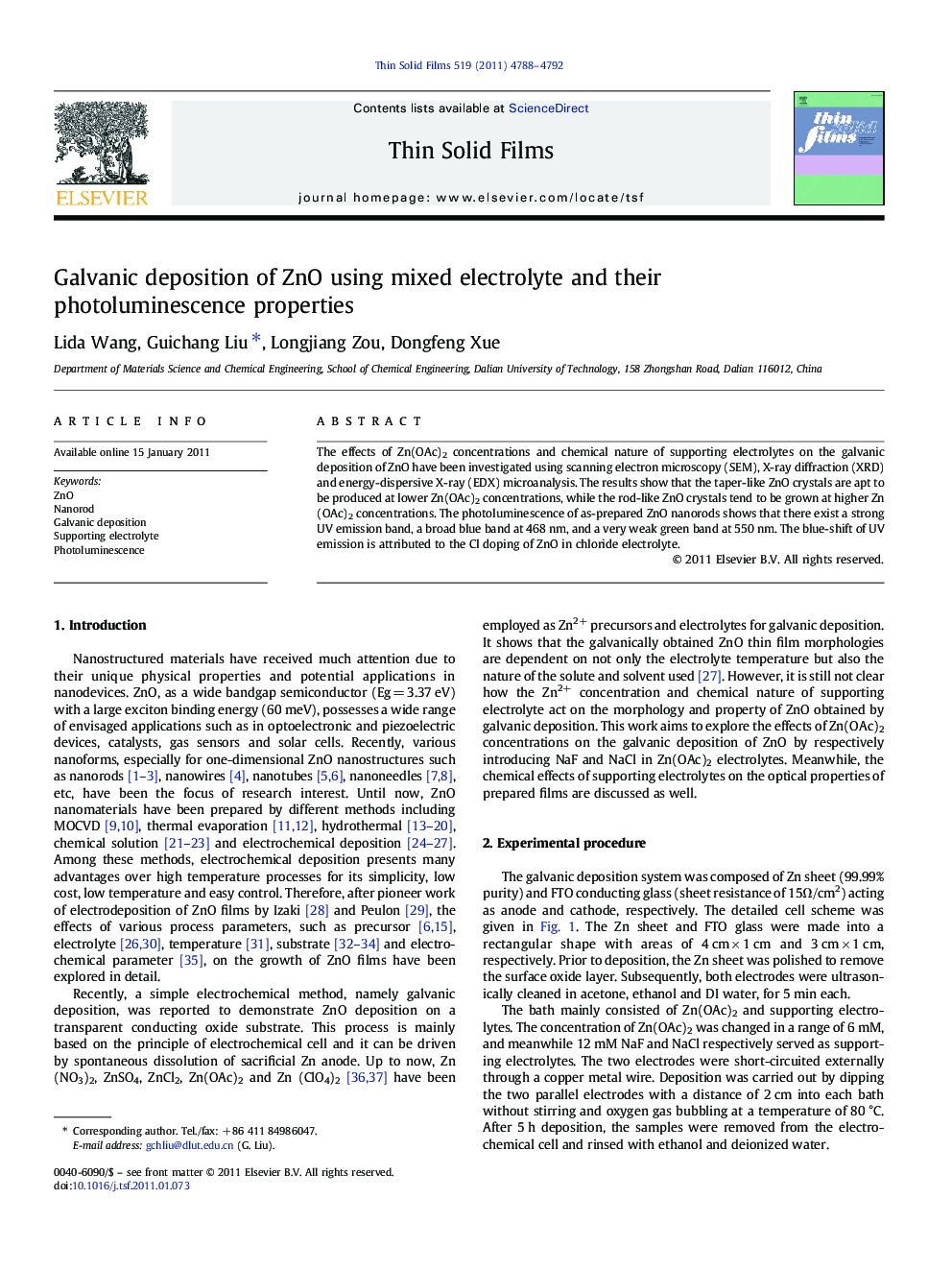| Article ID | Journal | Published Year | Pages | File Type |
|---|---|---|---|---|
| 1667680 | Thin Solid Films | 2011 | 5 Pages |
Abstract
The effects of Zn(OAc)2 concentrations and chemical nature of supporting electrolytes on the galvanic deposition of ZnO have been investigated using scanning electron microscopy (SEM), X-ray diffraction (XRD) and energy-dispersive X-ray (EDX) microanalysis. The results show that the taper-like ZnO crystals are apt to be produced at lower Zn(OAc)2 concentrations, while the rod-like ZnO crystals tend to be grown at higher Zn(OAc)2 concentrations. The photoluminescence of as-prepared ZnO nanorods shows that there exist a strong UV emission band, a broad blue band at 468Â nm, and a very weak green band at 550Â nm. The blue-shift of UV emission is attributed to the Cl doping of ZnO in chloride electrolyte.
Related Topics
Physical Sciences and Engineering
Materials Science
Nanotechnology
Authors
Lida Wang, Guichang Liu, Longjiang Zou, Dongfeng Xue,
